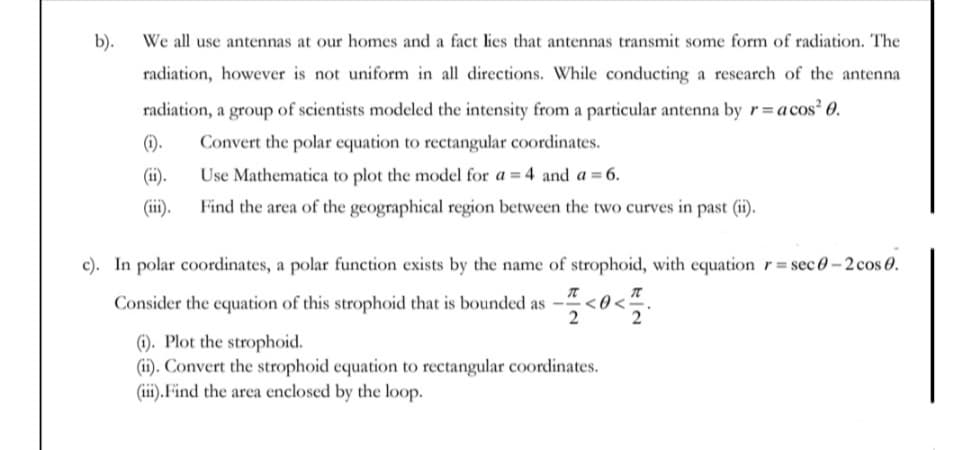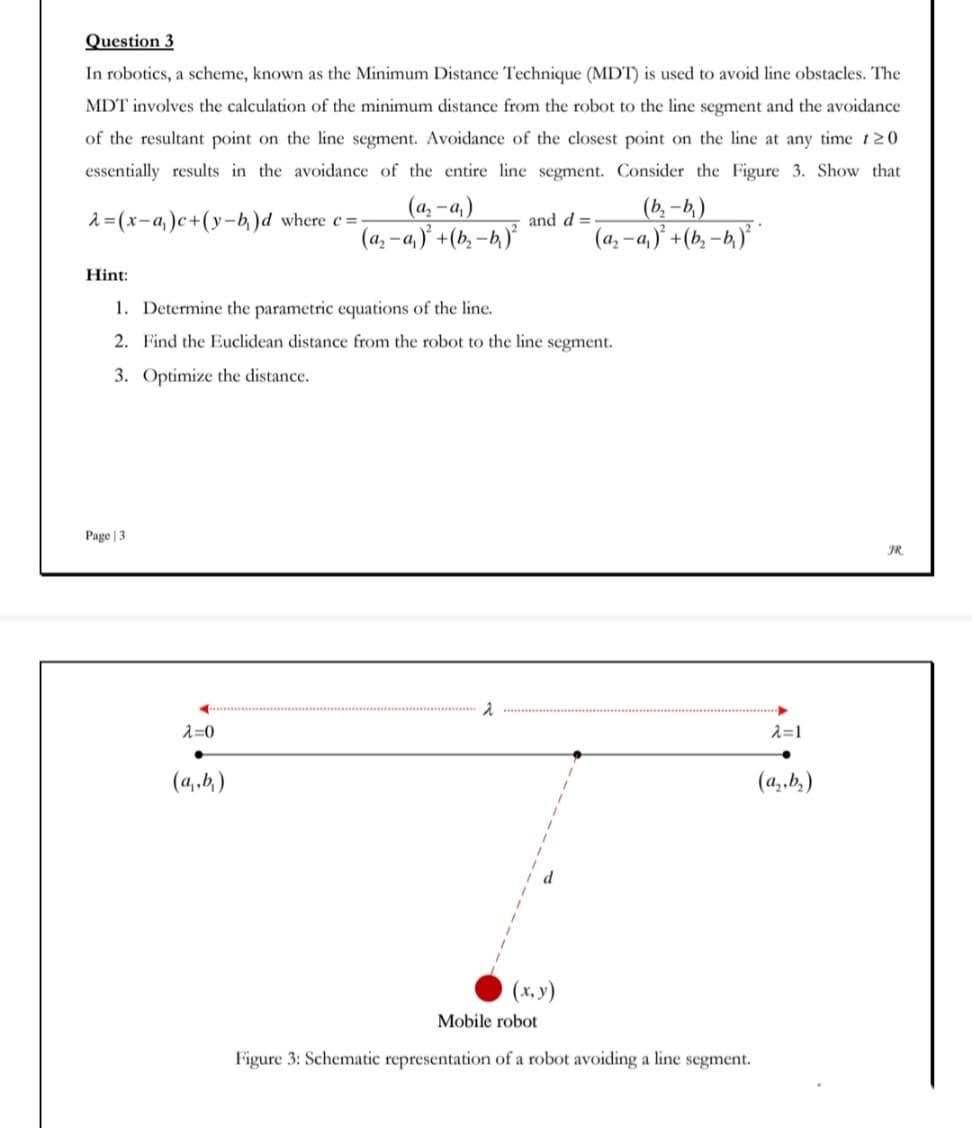b). We all use antennas at our homes and a fact lies that antennas transmit some form of radiation. The radiation, however is not uniform in all directions. While conducting a research of the antenna radiation, a group of scientists modeled the intensity from a particular antenna by r=acos² 0. 1). Convert the polar equation to rectangular coordinates. (ii). Use Mathematica to plot the model for a = 4 and a = 6. (iii). Find the area of the geographical region between the two curves in past (ii). c). In polar coordinates, a polar function exists by the name of strophoid, with equation r=sec0-2cos 0. Consider the equation of this strophoid that is bounded as 1). Plot the strophoid. (11). Convert the strophoid equation to rectangular coordinates. (iii). Find the area enclosed by the loop.
b). We all use antennas at our homes and a fact lies that antennas transmit some form of radiation. The radiation, however is not uniform in all directions. While conducting a research of the antenna radiation, a group of scientists modeled the intensity from a particular antenna by r=acos² 0. 1). Convert the polar equation to rectangular coordinates. (ii). Use Mathematica to plot the model for a = 4 and a = 6. (iii). Find the area of the geographical region between the two curves in past (ii). c). In polar coordinates, a polar function exists by the name of strophoid, with equation r=sec0-2cos 0. Consider the equation of this strophoid that is bounded as 1). Plot the strophoid. (11). Convert the strophoid equation to rectangular coordinates. (iii). Find the area enclosed by the loop.
Trigonometry (MindTap Course List)
8th Edition
ISBN:9781305652224
Author:Charles P. McKeague, Mark D. Turner
Publisher:Charles P. McKeague, Mark D. Turner
Chapter8: Complex Numbers And Polarcoordinates
Section: Chapter Questions
Problem 7GP
Related questions
Question

Transcribed Image Text:b).
We all use antennas at our homes and a fact lies that antennas transmit some form of radiation. The
radiation, however is not uniform in all directions. While conducting a research of the antenna
radiation, a group of scientists modeled the intensity from a particular antenna by r= acos? 0.
().
Convert the polar equation to rectangular coordinates.
(ii).
Use Mathematica to plot the model for a = 4 and a = 6.
(ii).
Find the area of the geographical region between the two curves in past (ii).
c). In polar coordinates, a polar function exists by the name of strophoid, with equationr=sec 0-2 cos 0.
Consider the equation of this strophoid that is bounded as
<0<:
(1). Plot the strophoid.
(ii). Convert the strophoid equation to rectangular coordinates.
(iii). Find the area enclosed by the loop.

Transcribed Image Text:Question 3
In robotics, a scheme, known as the Minimum Distance Technique (MDT) is used to avoid line obstacles. The
MDT involves the calculation of the minimum distance from the robot to the line segment and the avoidance
of the resultant point on the line segment. Avoidance of the closest point on the line at any time t20
essentially results in the avoidance of the entire line segment. Consider the Figure 3. Show that
(a, - a,)
(a, -a,)' +(b, –b.)°
(b, – b,)
(a, -a,)* +(b, –b,)* *
2= (x-a,)c+(y-b,)d where e=
and d =
Hint:
1. Determine the parametric equations of the line.
2. Find the Euclidean distance from the robot to the line segment.
3. Optimize the distance.
Page | 3
JR.
入=0
入=1
(4,,b,)
(a,.b,)
(x, y)
Mobile robot
Figure 3: Schematic representation of a robot avoiding a line segment.
Expert Solution
This question has been solved!
Explore an expertly crafted, step-by-step solution for a thorough understanding of key concepts.
Step by step
Solved in 5 steps with 1 images

Knowledge Booster
Learn more about
Need a deep-dive on the concept behind this application? Look no further. Learn more about this topic, advanced-math and related others by exploring similar questions and additional content below.Recommended textbooks for you

Trigonometry (MindTap Course List)
Trigonometry
ISBN:
9781305652224
Author:
Charles P. McKeague, Mark D. Turner
Publisher:
Cengage Learning

Trigonometry (MindTap Course List)
Trigonometry
ISBN:
9781337278461
Author:
Ron Larson
Publisher:
Cengage Learning

Algebra & Trigonometry with Analytic Geometry
Algebra
ISBN:
9781133382119
Author:
Swokowski
Publisher:
Cengage

Trigonometry (MindTap Course List)
Trigonometry
ISBN:
9781305652224
Author:
Charles P. McKeague, Mark D. Turner
Publisher:
Cengage Learning

Trigonometry (MindTap Course List)
Trigonometry
ISBN:
9781337278461
Author:
Ron Larson
Publisher:
Cengage Learning

Algebra & Trigonometry with Analytic Geometry
Algebra
ISBN:
9781133382119
Author:
Swokowski
Publisher:
Cengage